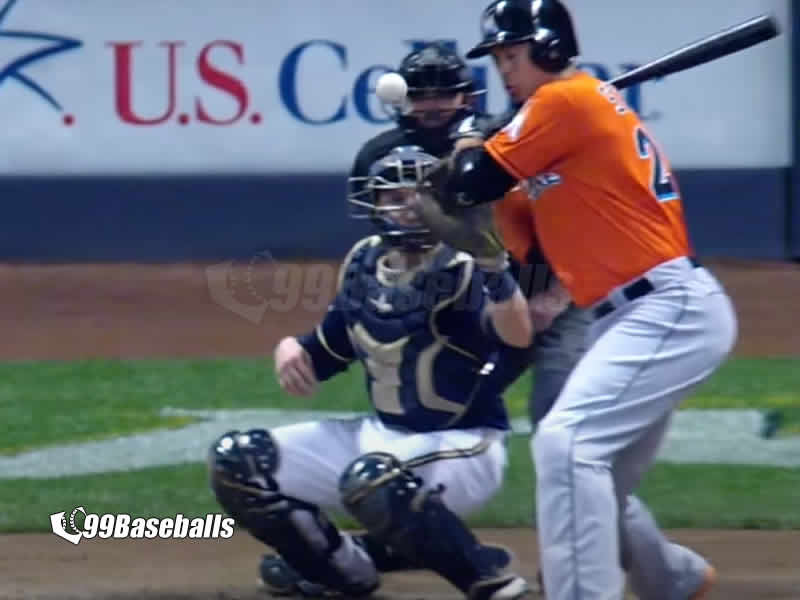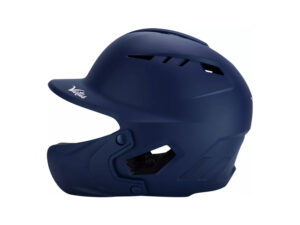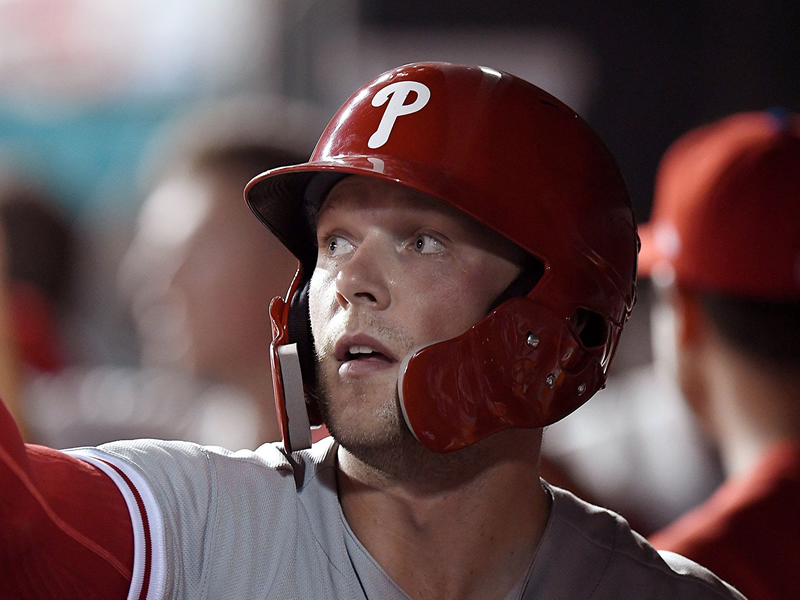Imagine stepping up to the plate, the crowd’s cheers filling the air, the pitcher winding up – it’s the quintessence of baseball. But what if, in that split second, something goes awry?
As a seasoned veteran as a youth baseball coach for over 15 years, I’ve witnessed the unthinkable: a moment of thrill turning into a potential tragedy due to inadequate head protection.

Needless to say, protecting your child’s head during a youth baseball game is of paramount importance.
Introduction
The importance of safety in youth baseball cannot be overstated, as it ensures young players enjoy these benefits without risking their well-being.
| Baseball Safety Equipment |
|---|
| This article is part of a series dedicated to reviewing various safety equipment essential in youth baseball, designed to protect players from common injuries associated with the sport. |
As a seasoned coach in youth baseball, I’ve seen the evolution of the game, especially in terms of safety equipment. The helmet, often overshadowed by bats and gloves, is actually the cornerstone of a young player’s safety.
This comprehensive guide delves into the importance of proper head protection, focusing on youth baseball helmets, the critical role of NOCSAE standards, and the innovative C-Flap attachment.
Table of Contents
Hit-by-Pitch: Batter’s Reaction
Facing a pitch that veers off its intended course is an inevitable part of baseball, often considered a challenging rite of passage. In youth leagues, pitches that end up hitting batters, commonly referred to as ‘bean balls,’ are typically unintentional.
This makes the young batter’s reaction to an incoming pitch a pivotal moment, reflecting a blend of their training and inherent instincts. Typically, there are three reactions:
- Stepping back from the home plate – Many players, driven by an innate desire for safety, naturally step back from the plate. This maneuver creates a buffer zone, akin to a cautious base runner who’s prepared to quickly dive back to the safety of the bag.
- Turn and shrink – Others, in a protective reflex, turn away from the pitch (towards the umpire) then crouch. By compacting their body, they aim to minimize the target area, reducing the likelihood of a painful impact.
- Opening up to the pitch – Regrettably, there are instances where players, perhaps due to inexperience or panic, turn their body to face the pitch. This reaction, though unintentional, exposes their face and chest to the ball, increasing the risk of injury.
Giancarlo Stanton’s Injury
In September 2014, Giancarlo Stanton, then a star outfielder for the Miami Marlins, suffered a severe and career-impacting facial injury during a baseball game. This incident occurred when a fastball hit Stanton in the face, leading to multiple fractures, dental damage, and a laceration.

This unfortunate event not only sidelined Stanton for the remainder of the season but also highlighted the risks baseball players face on the field. It underscored the critical importance of protective gear, such as helmets with face guards, in professional baseball.
Stanton’s injury and subsequent recovery became a pivotal moment in discussions about player safety and the need for enhanced protective measures in the sport.
Given that many young players may not yet have the disciplined approach to effectively handle a misdirected pitch, it’s vital to not only train them in proper reactionary techniques but also ensure they are adequately equipped with the right safety gear.
The combination of training and equipment is essential in fostering both the physical safety and confidence of these budding athletes.
Baseball Helmet: The First Line of Defense
A baseball helmet is part of a critical line of defense for the batter, a role that has undergone a significant transformation from the simpler designs of my early playing days to the advanced models I encounter in my coaching career.
Modern helmets are crafted with cutting-edge engineering and materials, meticulously designed to offer optimal protection against the impact of a baseball.

A well-fitted helmet, snug and unyielding, is indispensable, providing comprehensive coverage to the player’s head.
This critical safety feature is rigorously overseen by the National Operating Committee on Standards for Athletic Equipment (NOCSAE), the definitive authority in helmet safety.

Helmets bearing the NOCSAE certification are assured to meet and withstand the high demands of safety, offering robust protection against the high-velocity impacts that are a common part of the game.

For youth players, whose skills and reflexes are still in the developmental phase, adhering to the NOCSAE standard becomes even more essential. It ensures that the helmets they wear are equipped to offer the highest level of protection, keeping them safer as they learn and grow in the sport.
The C-Flap for Facial Protection
The C-Flap, a modern addition to baseball safety gear, has emerged as a crucial component in preventing facial injuries for batters.

This innovative attachment, functioning like a protective visor, extends to shield the vulnerable areas of the cheek and jaw, much like a strategic infield shift designed to cover potential weak spots in defense.
| C-flap Synonyms |
|---|
| C-flap is sometimes referred to as “Extended Jaw Guard”, “face shield”, “face protector”, “jaw guard”, or “helmet extension” |
Its design is focused on providing a barrier against direct impacts that could result in severe facial trauma. The significance of the C-Flap was underscored by high-profile incidents in the major leagues, including the notable injury suffered by Giancarlo Stanton, which brought to light the vulnerability of players’ faces to fast-moving pitches.
The attachment, while offering substantial protection, does come with considerations: some players may find it adds a slight weight to the helmet or requires a period of adjustment to get used to the feel. Others feel that the flap limits their peripheral vision.
| Liability insurance |
|---|
| It’s important to note that certain youth baseball leagues or helmet manufacturers may have specific guidelines regarding the use of C-flaps, stipulating that they must be produced by the same manufacturer as the helmet. This requirement is often in place to ensure compliance with league insurance policies or to maintain the manufacturer’s warranty on the helmet. Therefore, it’s crucial to reach out to your league official or the helmet manufacturer for clarification if you have any questions or concerns about the compatibility or use of a C-flap with your child’s helmet. |
Making the Right Call
The advancements in helmet technology, particularly in the NOCSAE standards and C-Flap attachments, can be likened to a well-coordinated double play in baseball—both are crucial and transformative elements of the game.
While there may be minor challenges or inconveniences associated with the C-Flap, such as initial discomfort or slight adjustments in visibility, these are often minor when weighed against the significant safety benefits it offers.

The C-Flap has been increasingly adopted by players at various levels who aim to enhance their safety on the field without sacrificing their performance. This trend reflects a growing recognition within the baseball community of the importance of balancing safety with competitive play.
Frequently Asked Questions
- What is a batting helmet with C-Flap?
- A batting helmet with a C-Flap is designed for baseball or softball players. It includes an extension on the side of the helmet that covers the jaw and chin, offering additional protection to the batter’s face.
- Why is a batting helmet with C-Flap necessary?
- This type of helmet is essential as it provides extra protection to the face from the impact of the ball, which is one of the most vulnerable areas on a player’s body. A hit to the face can cause serious injuries, and many leagues require this additional protection.
- Can any player wear a batting helmet with C-Flap?
- Yes, any baseball or softball player can wear a batting helmet with a C-Flap. It is highly recommended for all players for maximum safety.
- What are the types of C-Flaps available?
- There are right-handed and left-handed C-Flaps designed to protect the respective sides of the player’s face. Additionally, there are two-sided C-Flaps that offer protection for both sides.
- How do I know if a batting helmet with C-Flap is right for me?
- A batting helmet with a C-Flap is recommended for all players, particularly for those new to the game or improving their skills. Consultation with coaches or league officials can help determine if it’s required or recommended for your level of play.
- How is the C-Flap installed?
- In most cases, installing a C-Flap involves aligning the screw holes and attaching it using screws. Do NOT drill holes into the helmet, which will possibly compromise the helmet structure; instead, purchase a C-flap from the same manufacturer of the helmet
- Does attaching a C-Flap to an old helmet affect its certification?
- Helmets made from 2018 onwards generally have pre-made holes for C-Flap attachments. It’s crucial to match the brands of the helmet and C-Flap to ensure proper alignment. Drilling your own holes in an old helmet to attach a C-Flap can void its NOCSAE certification.
- What are the benefits of using a C-Flap?
- The C-Flap provides additional protection for the face and jaw, helps to prevent concussions by reducing impact energy, and is transparent, lightweight, and easy to attach without obstructing the player’s view.
- How should a batting helmet with C-Flap be maintained?
- Regular inspection for damage, secure attachment of the C-Flap, and cleaning with mild soap and a soft cloth are necessary. Avoid harsh chemicals and abrasive materials.
- What is NOCSAE certification and its importance for C-Flap helmets?
- NOCSAE (National Operating Committee on Standards for Athletic Equipment) sets safety standards for athletic equipment. Helmets with NOCSAE certification are tested for high-impact resistance, ensuring top safety for players.
- Can I attach two C-flaps?
- There are no rules preventing you from installing C-flaps, especially if you are a switch hitter. In fact, Rhys Hoskins wears dual C-flaps after fracturing his jaw.
